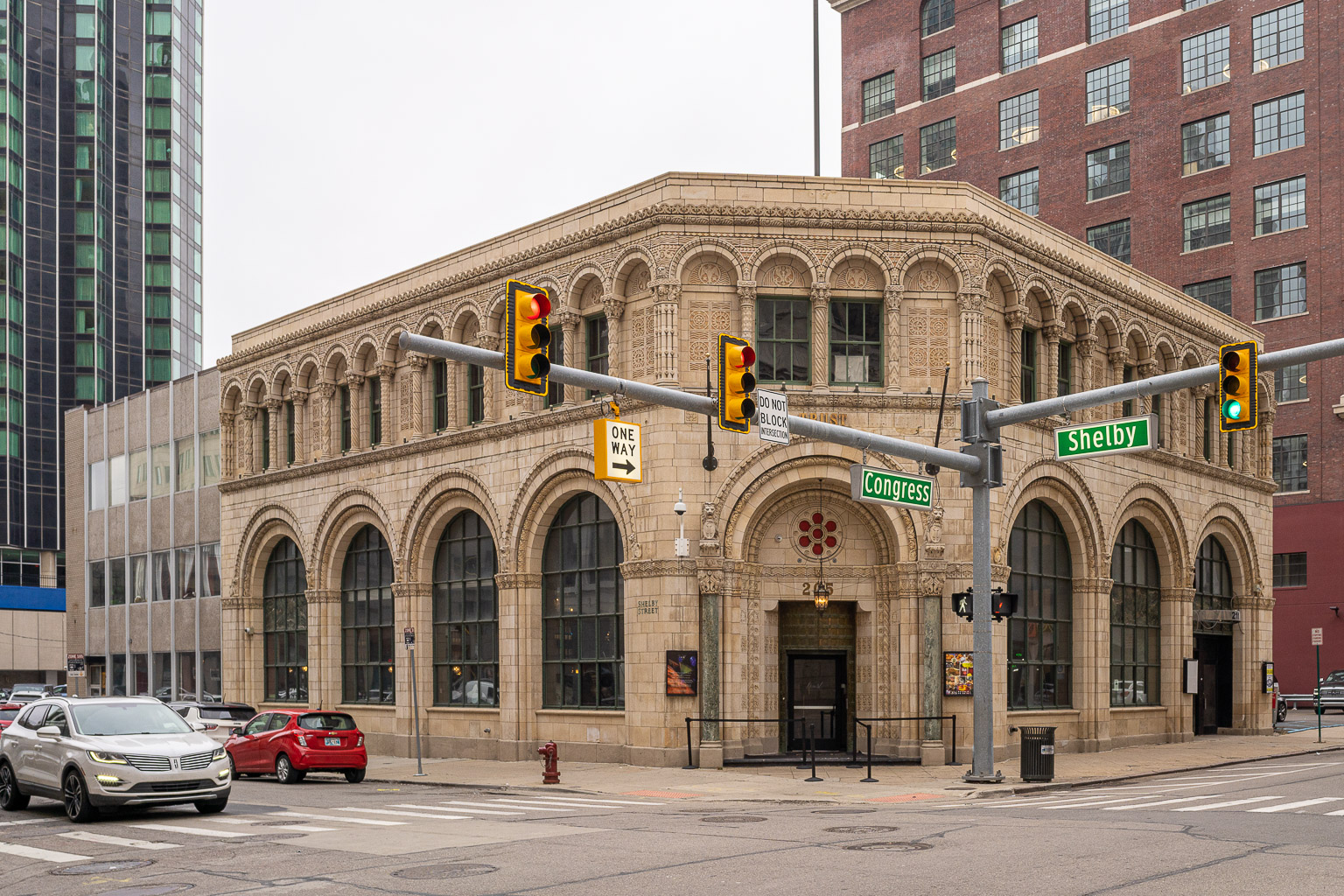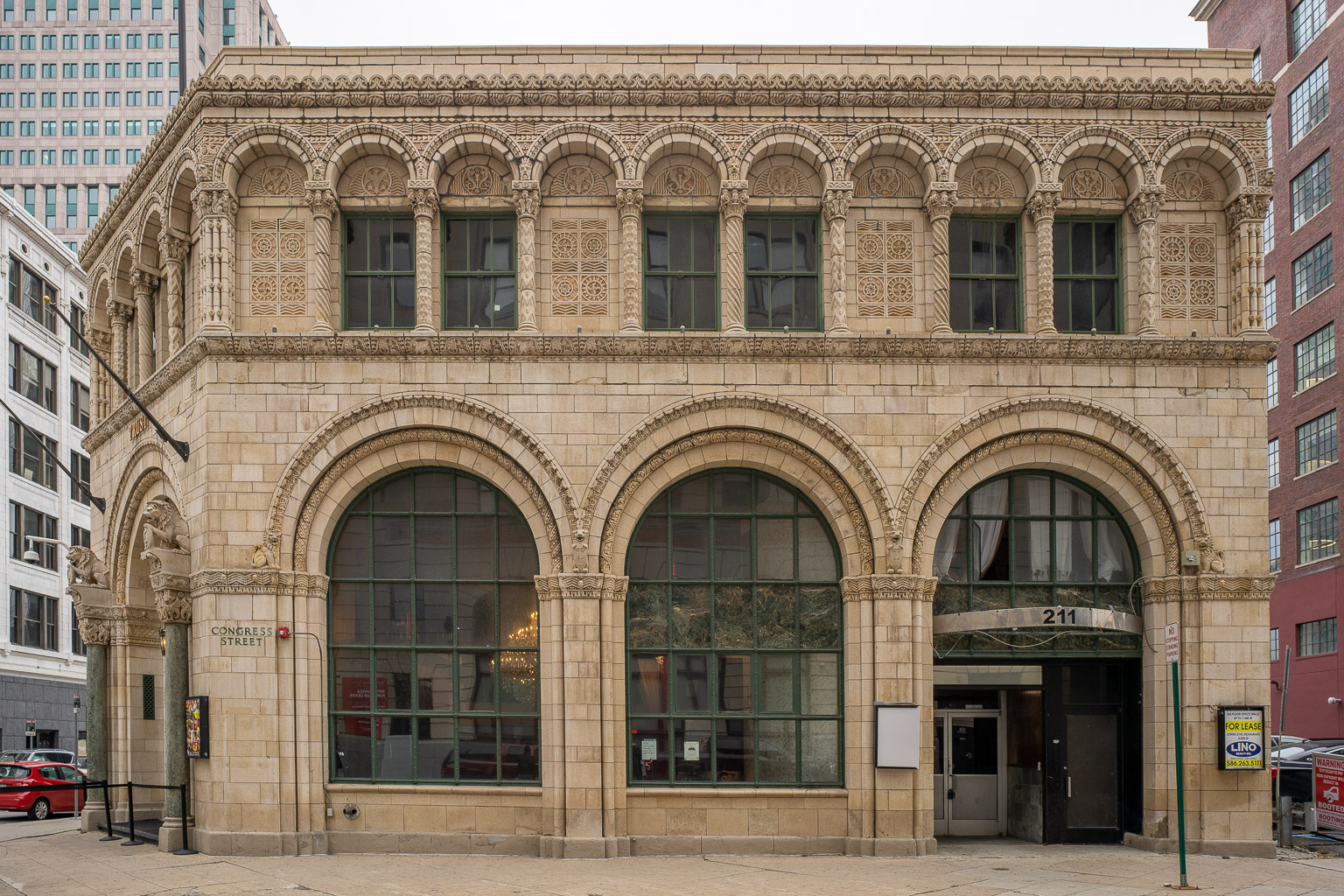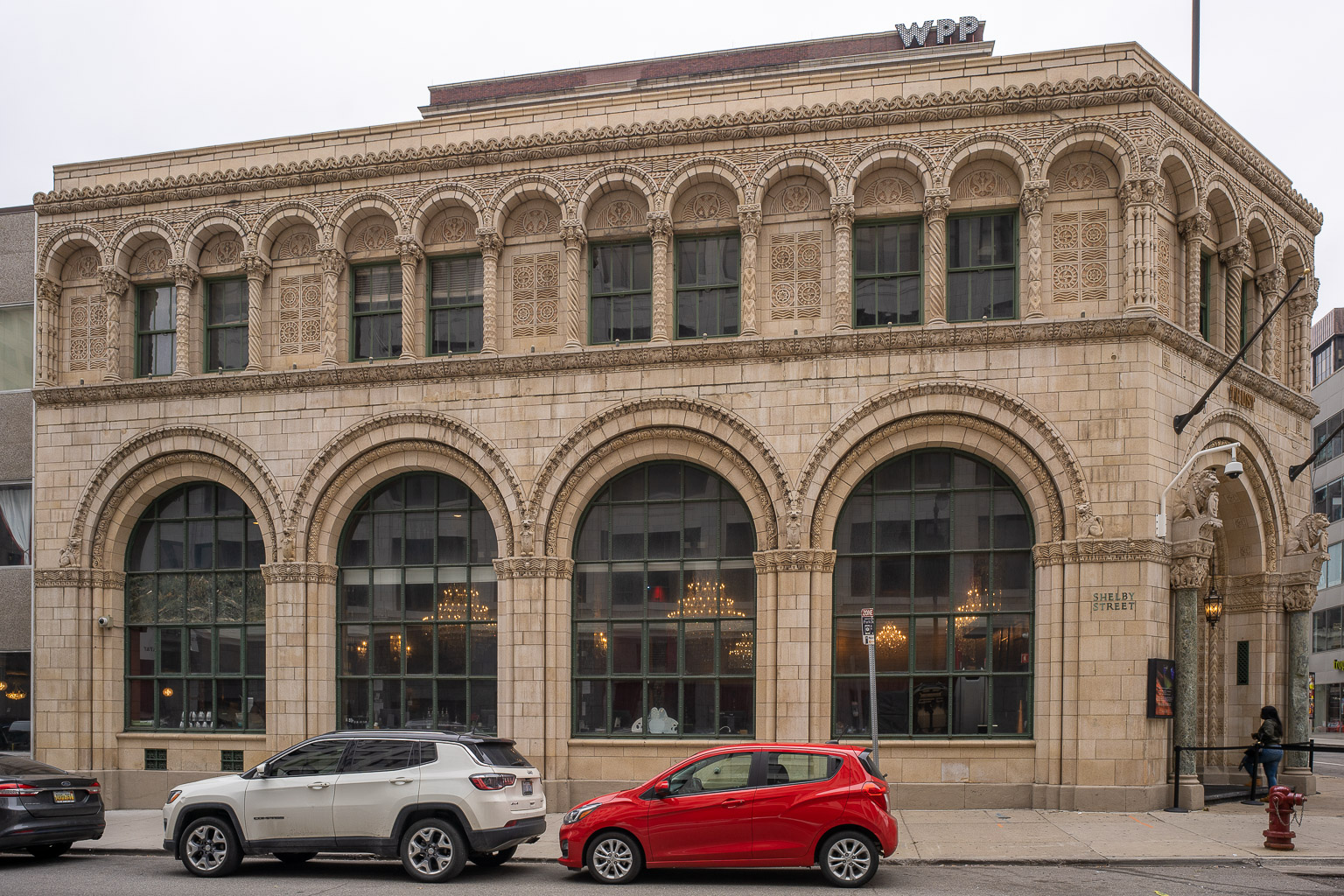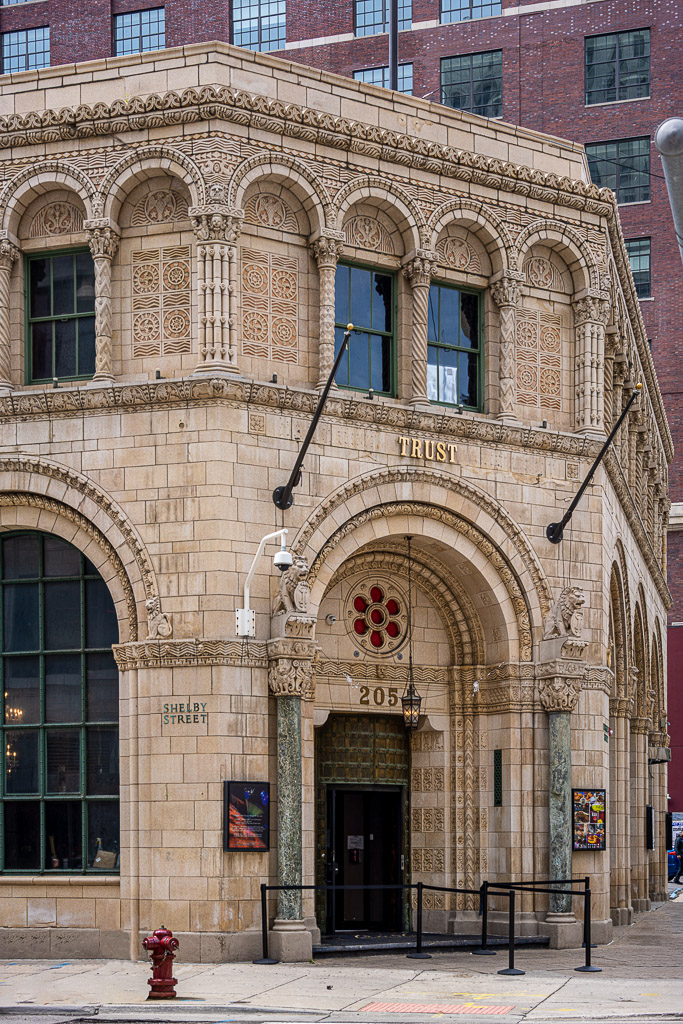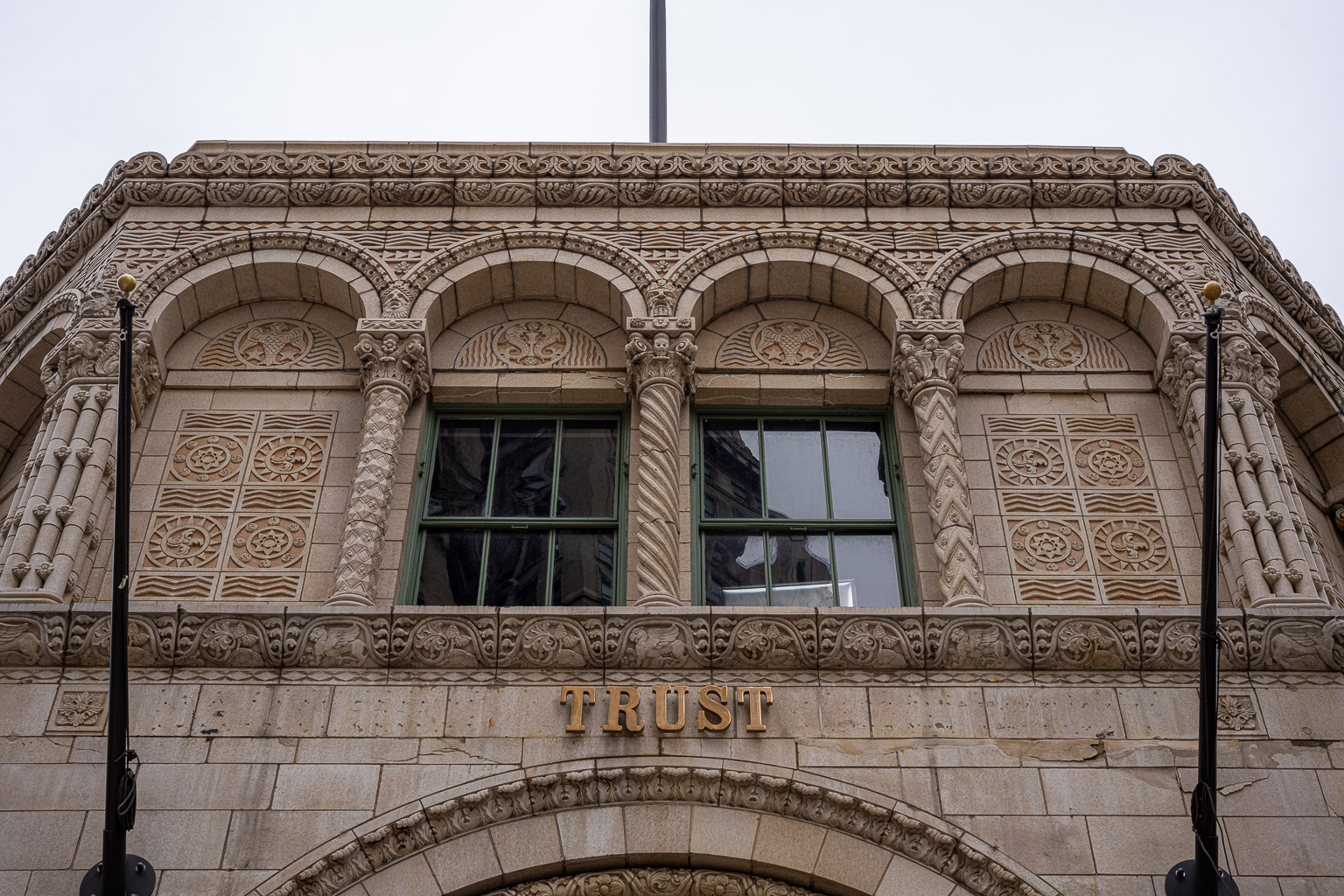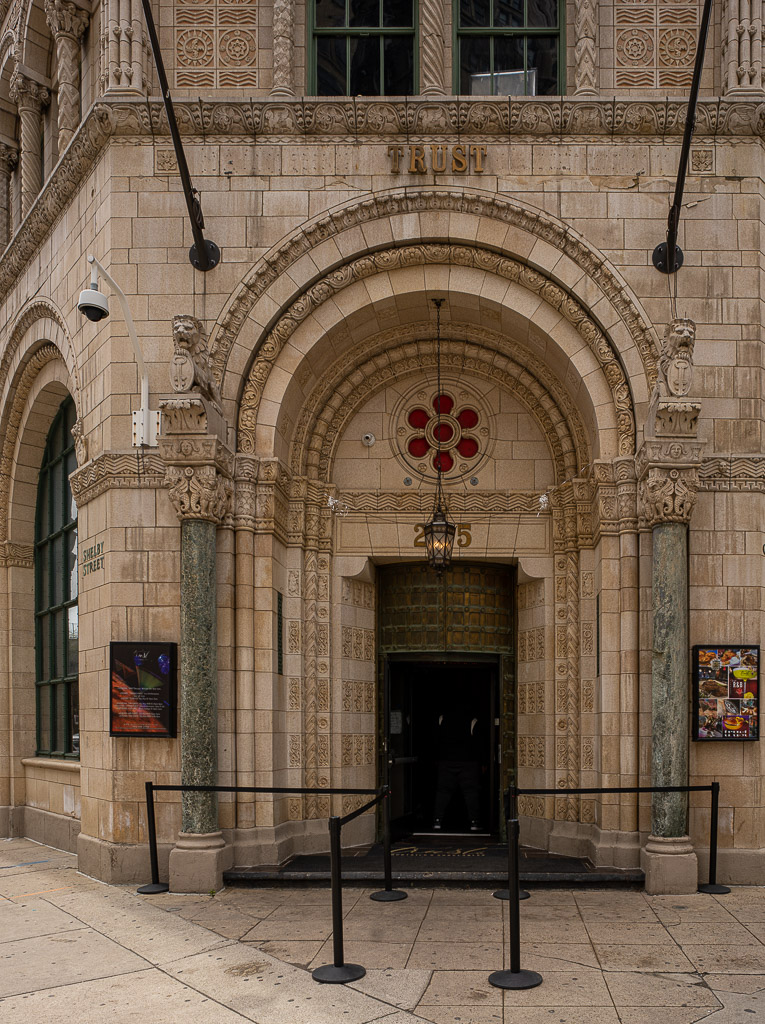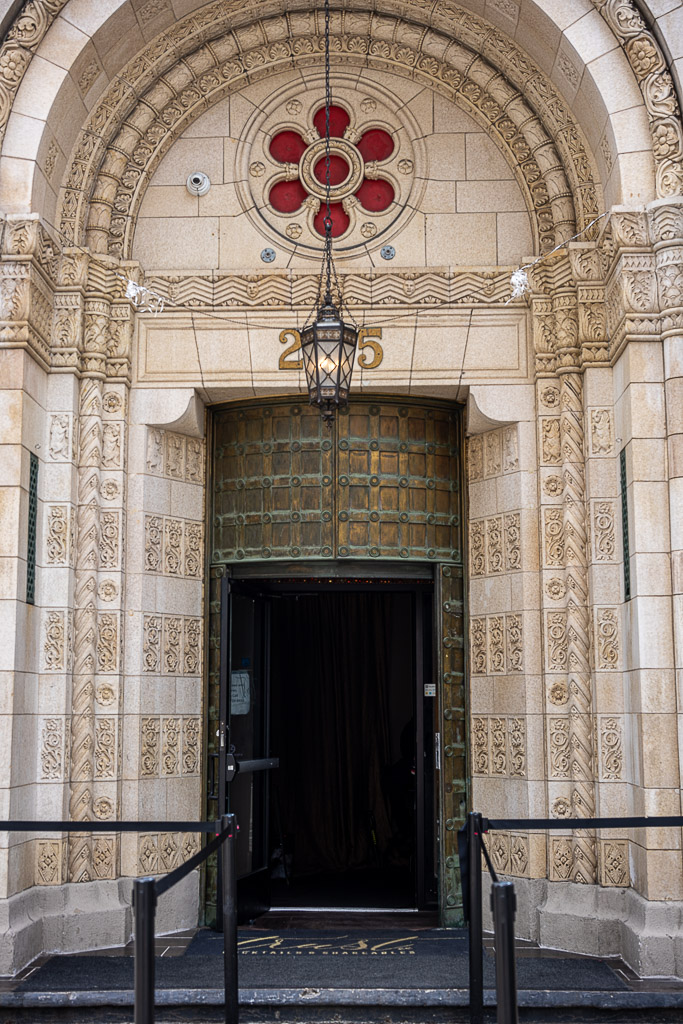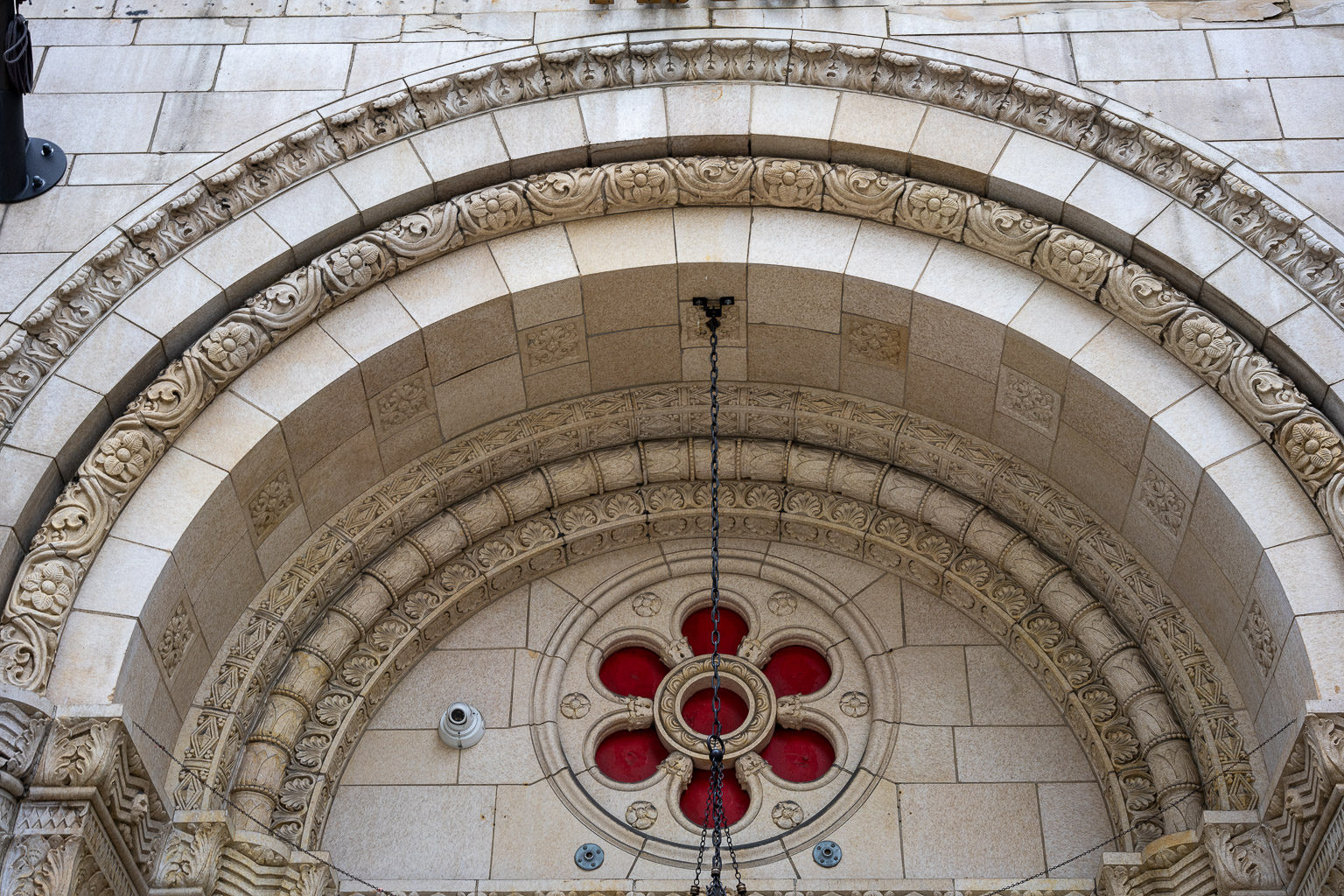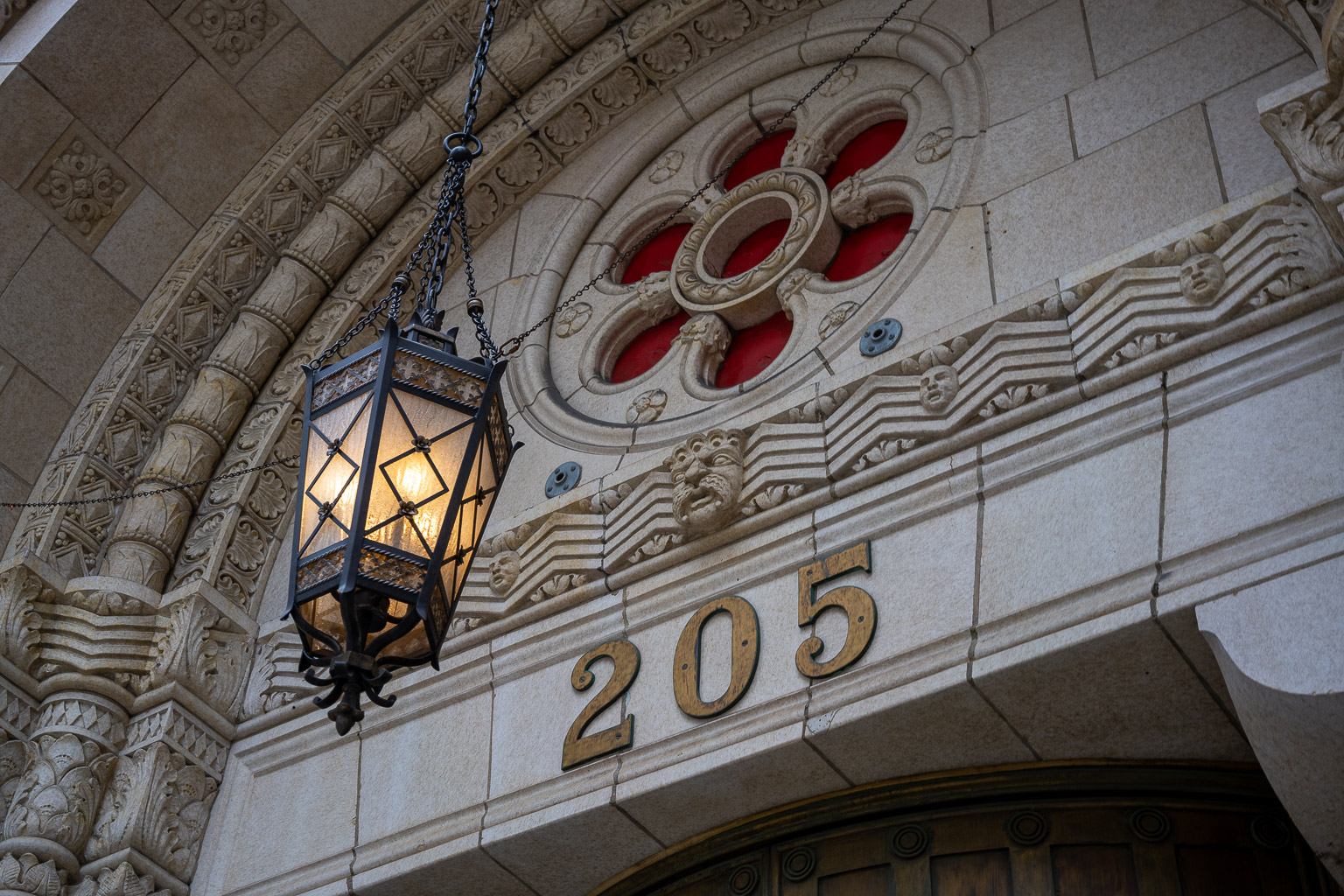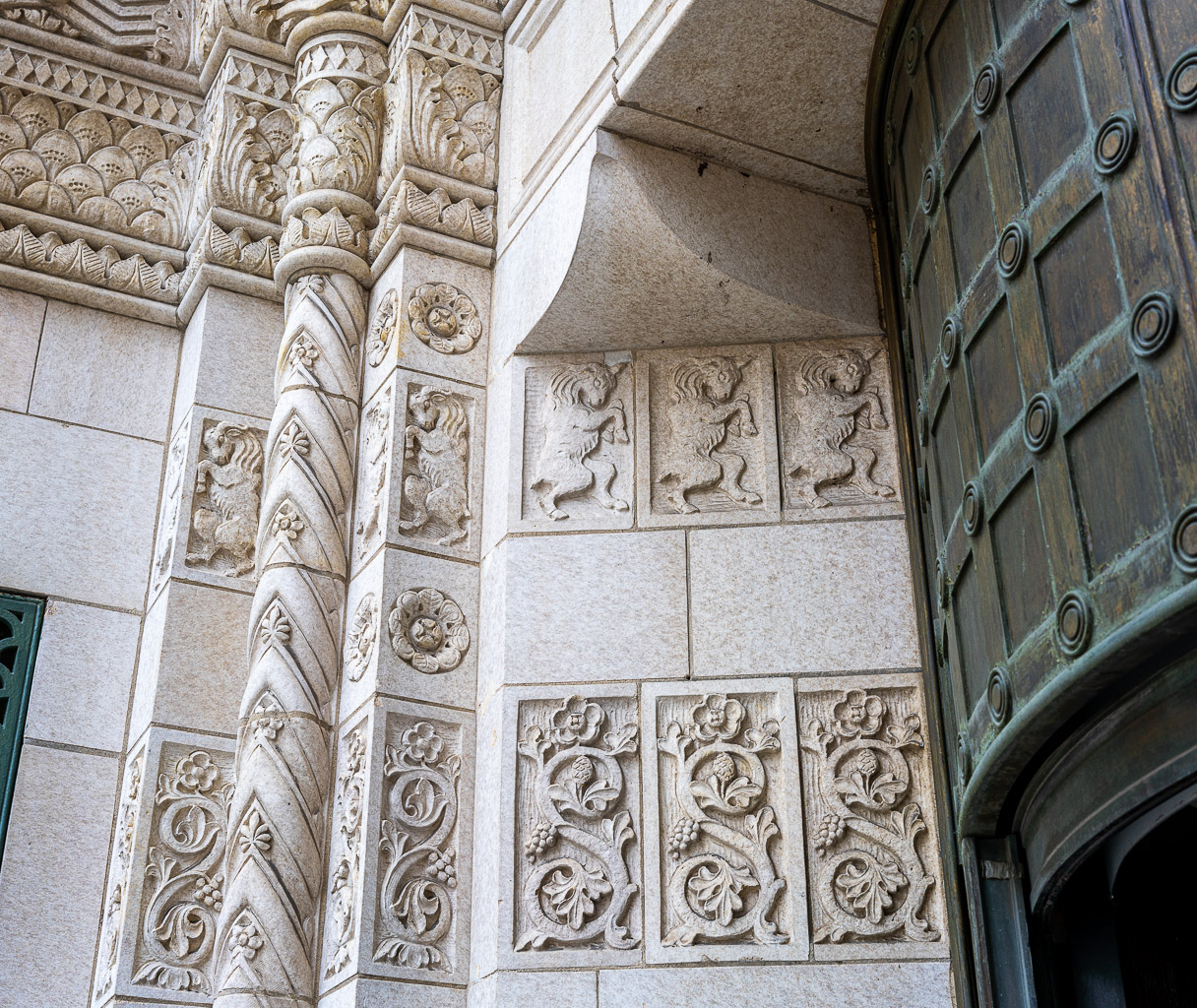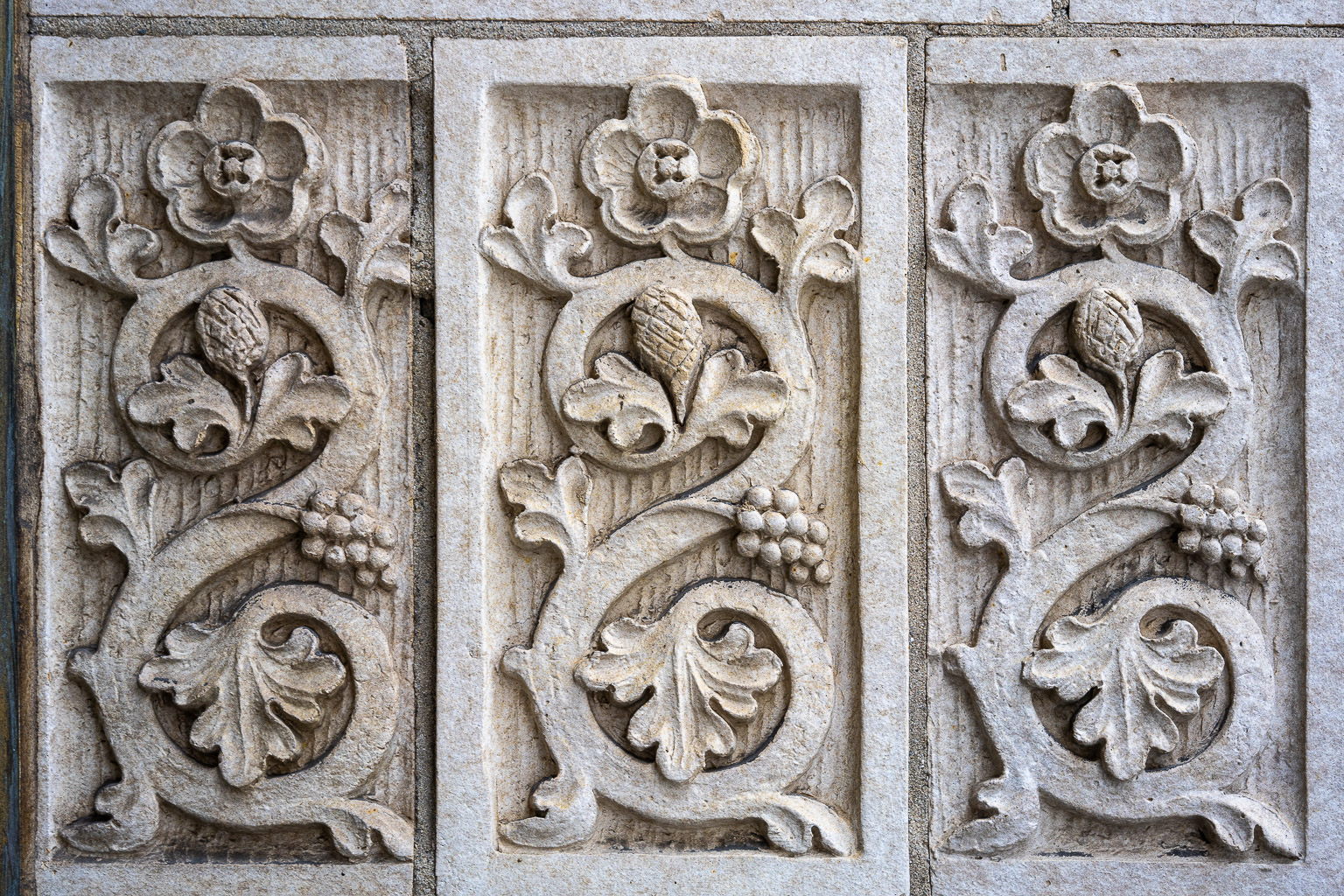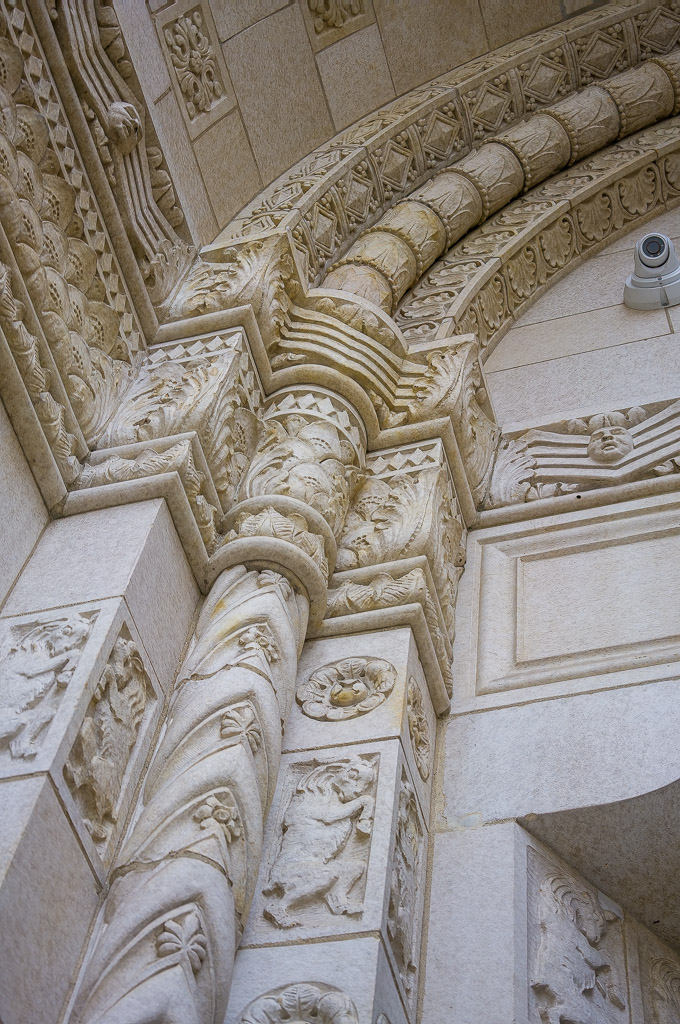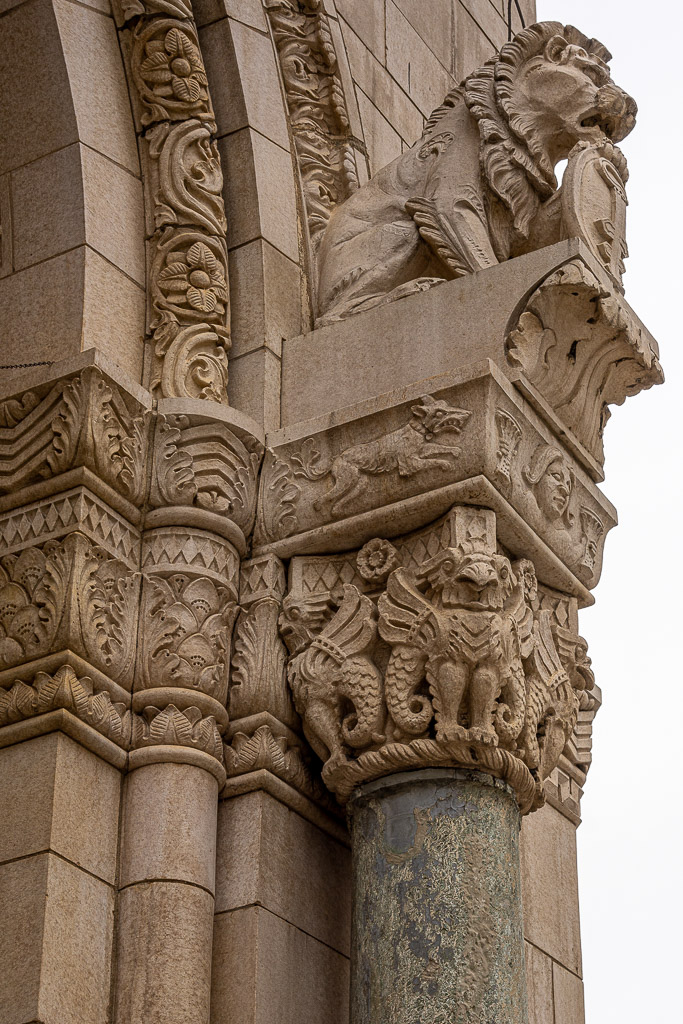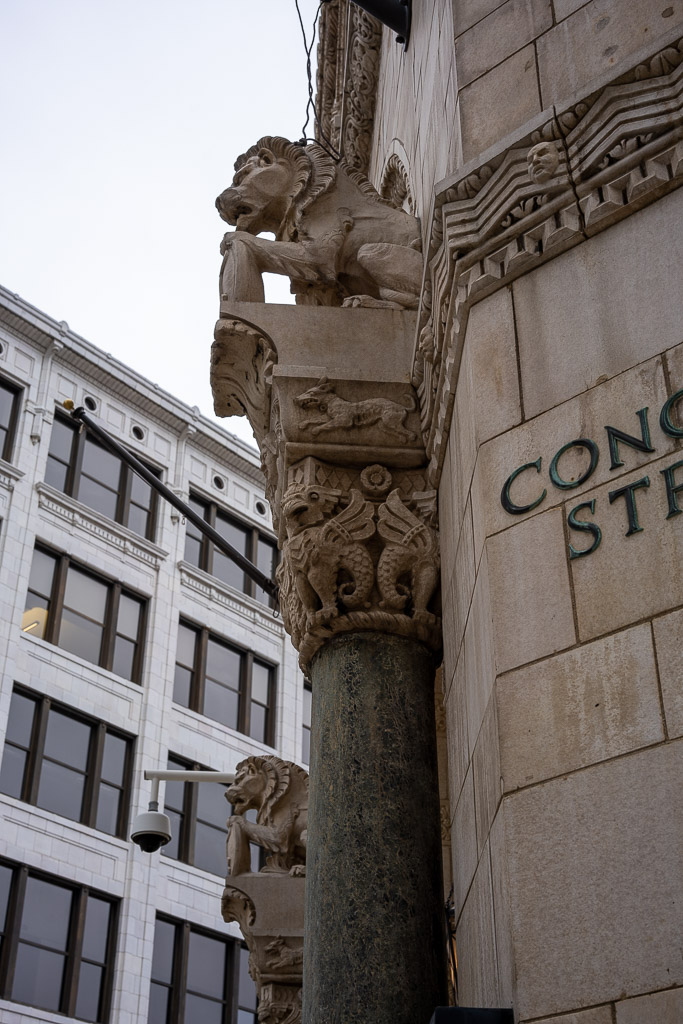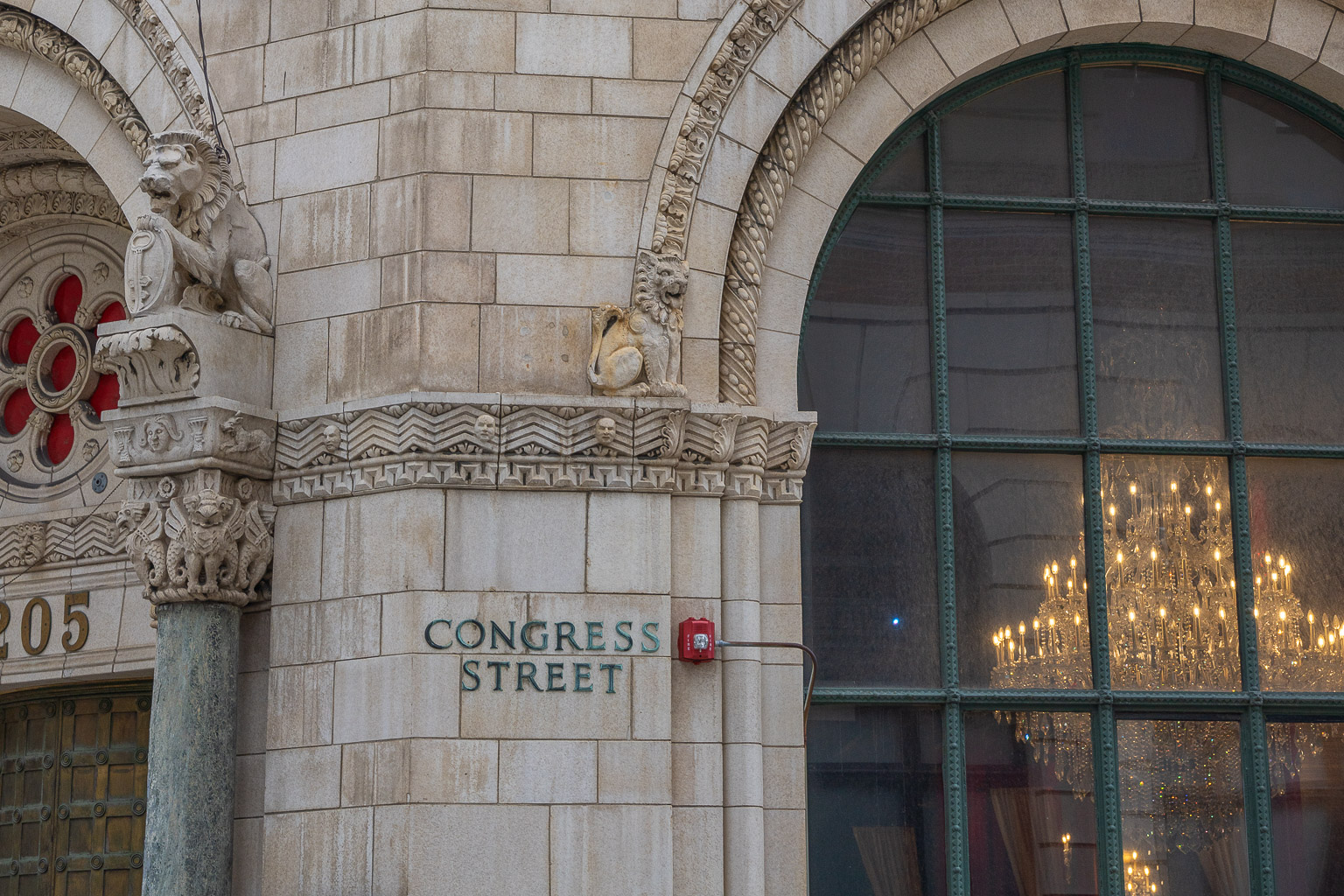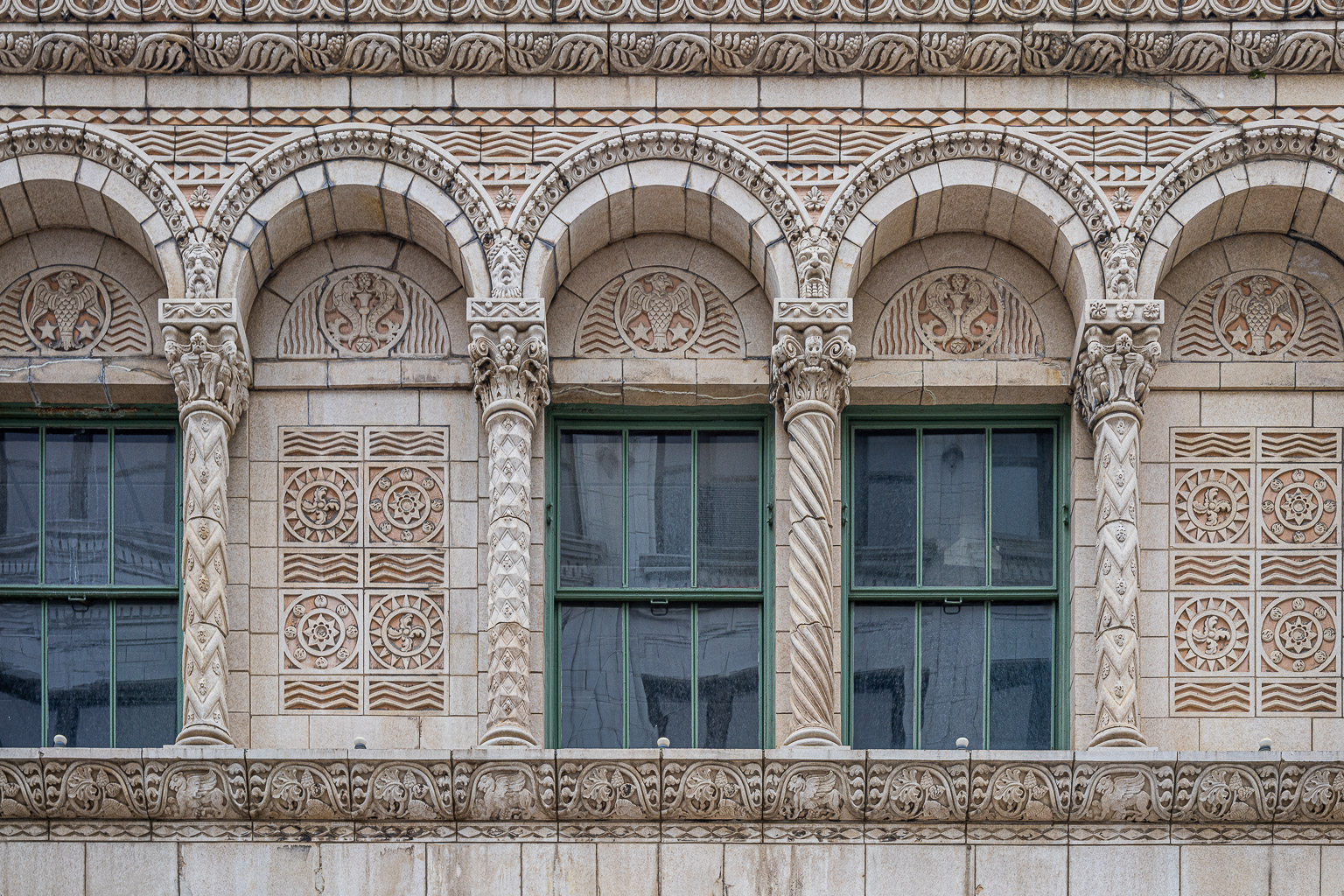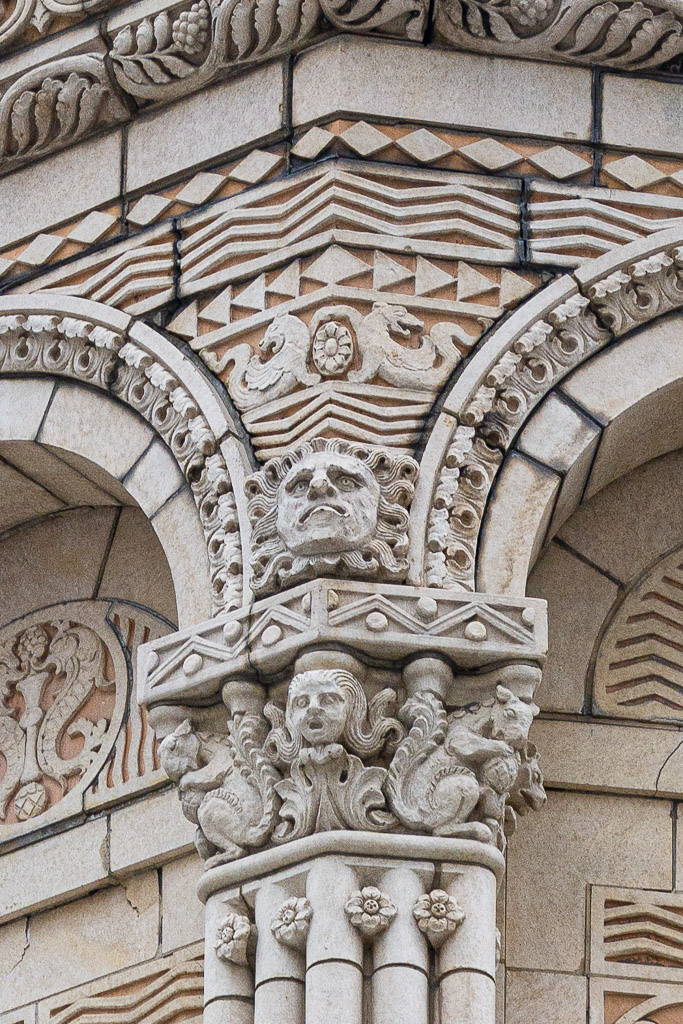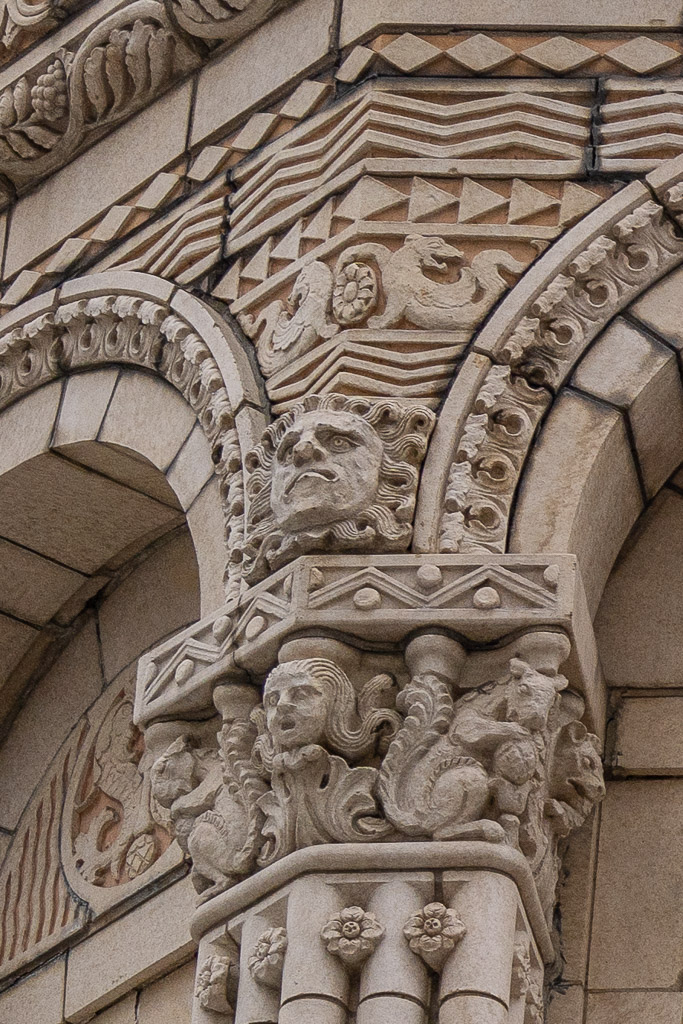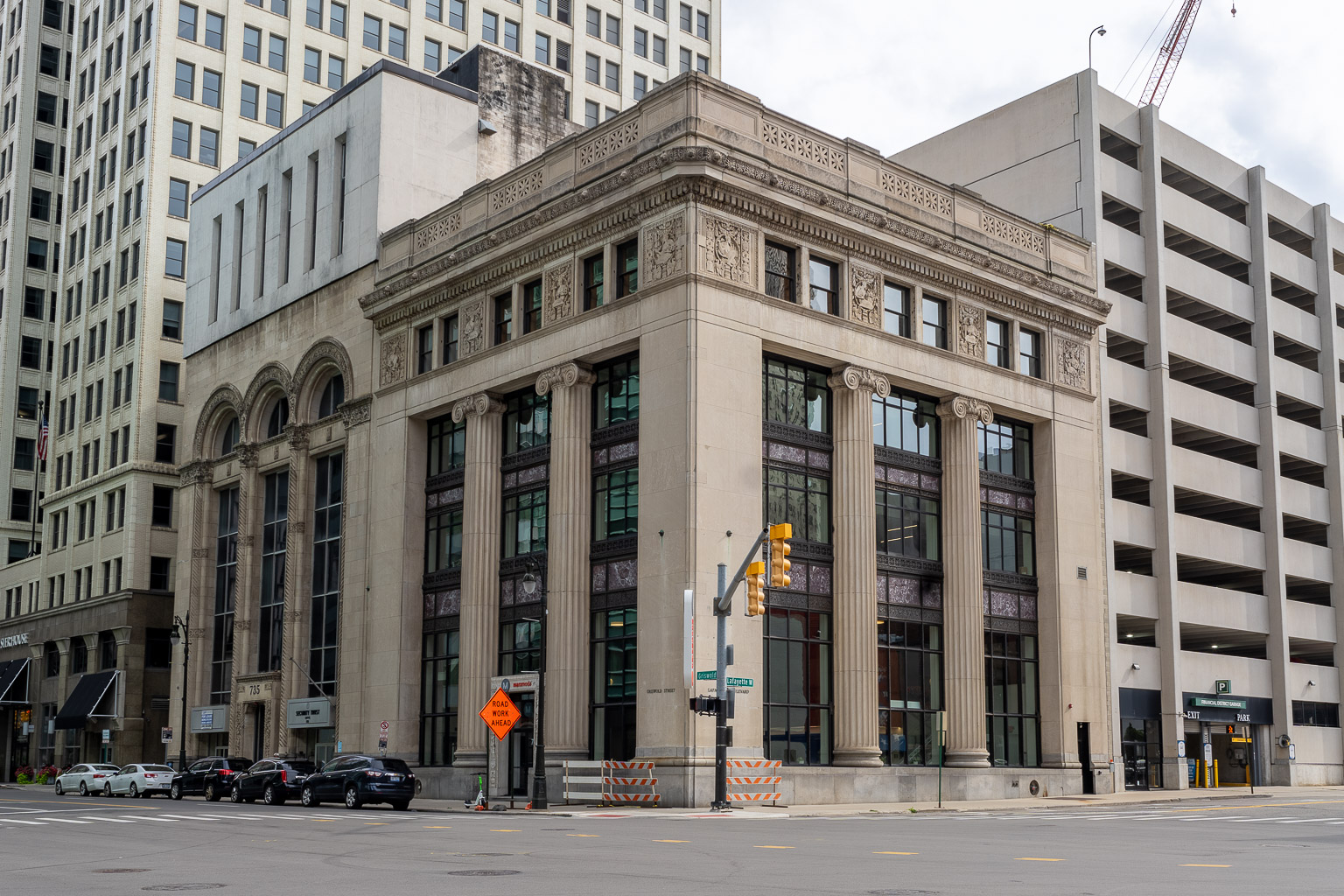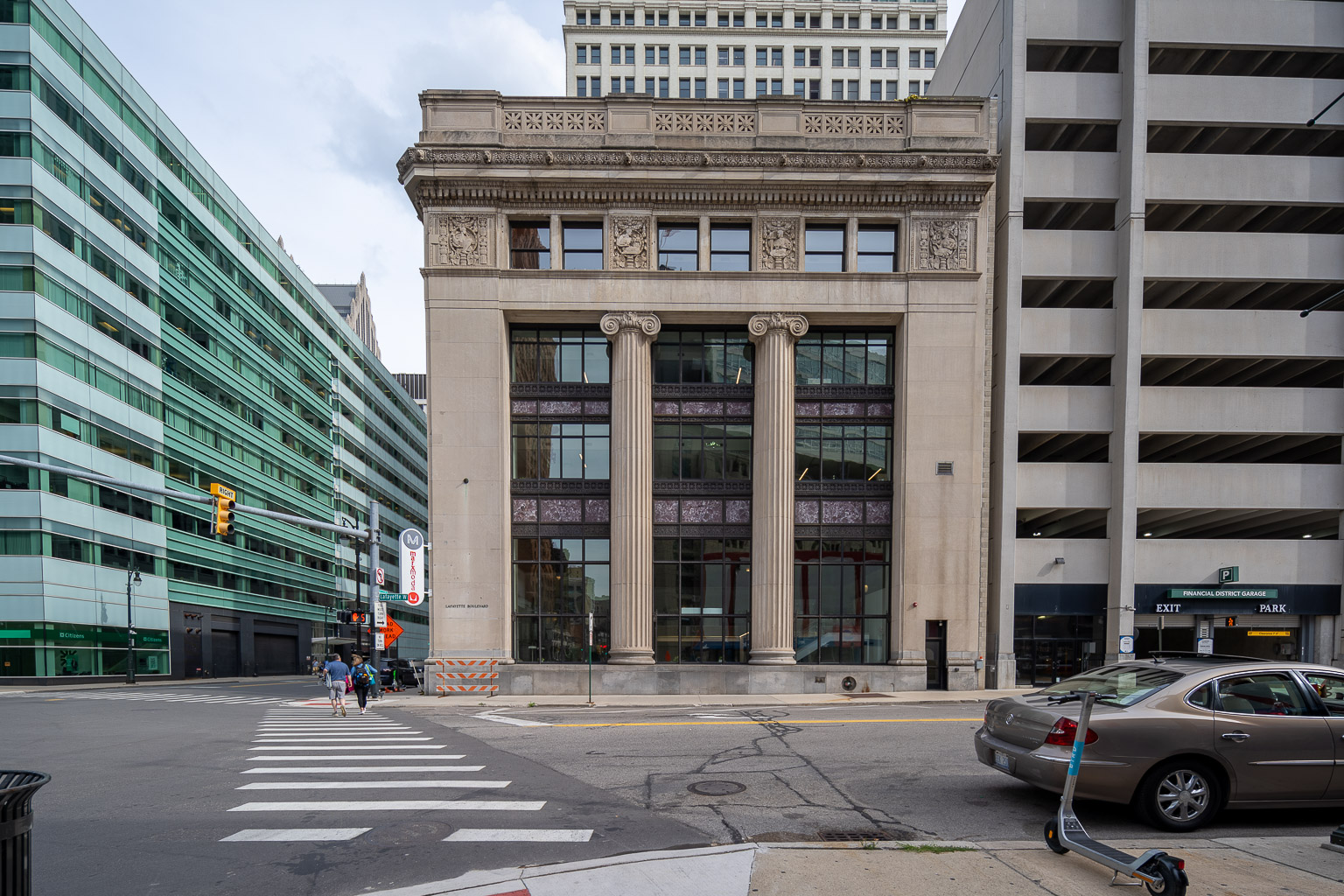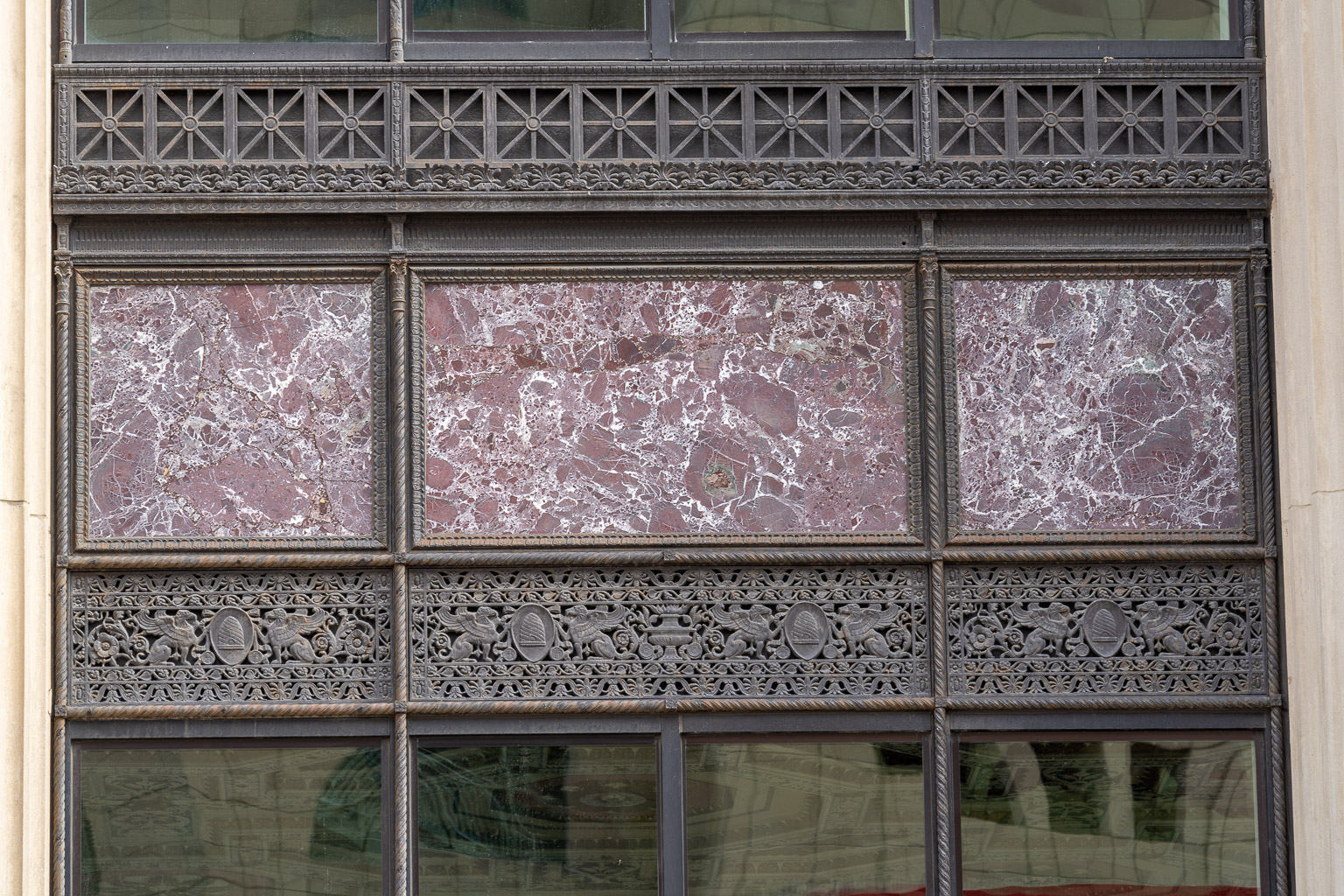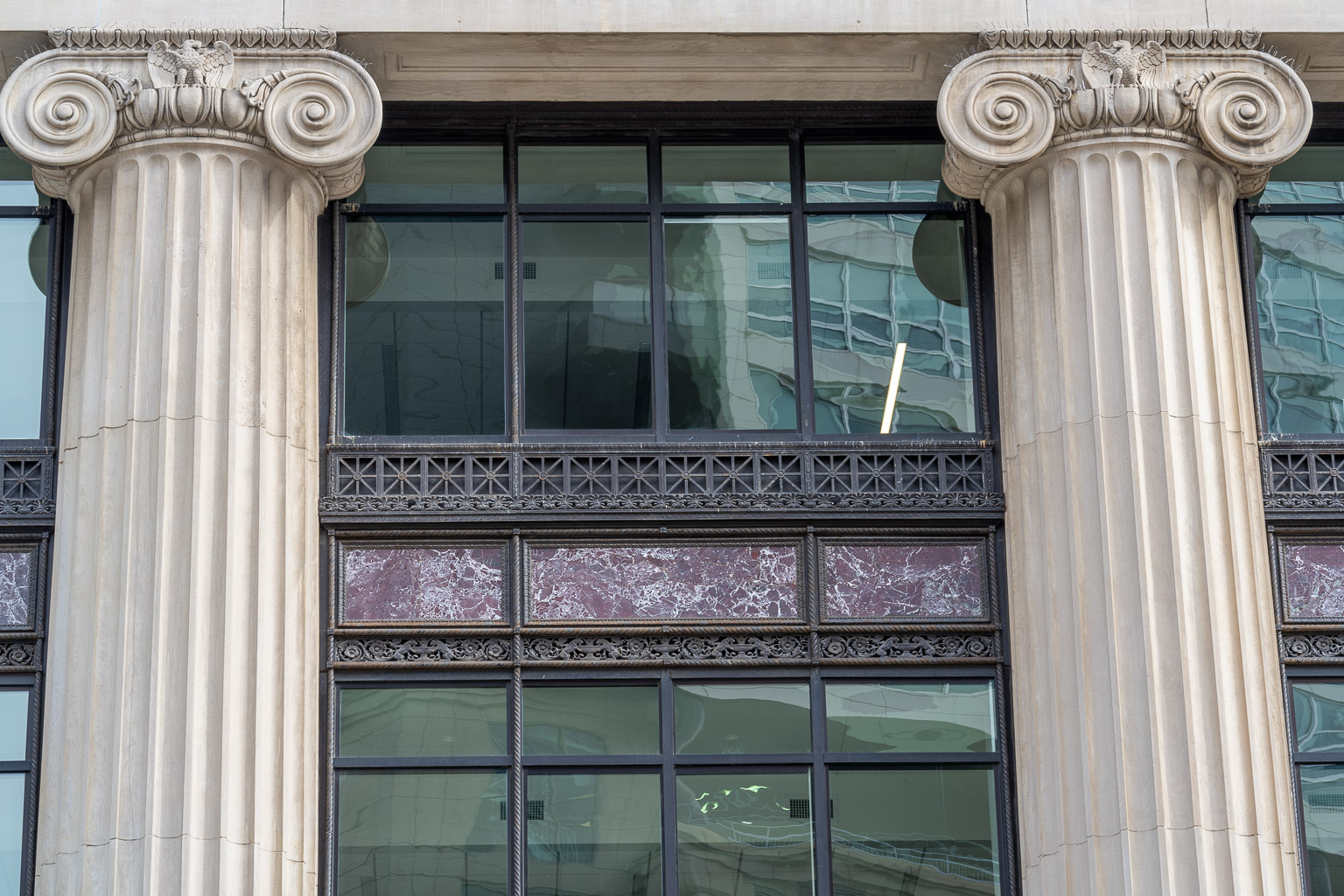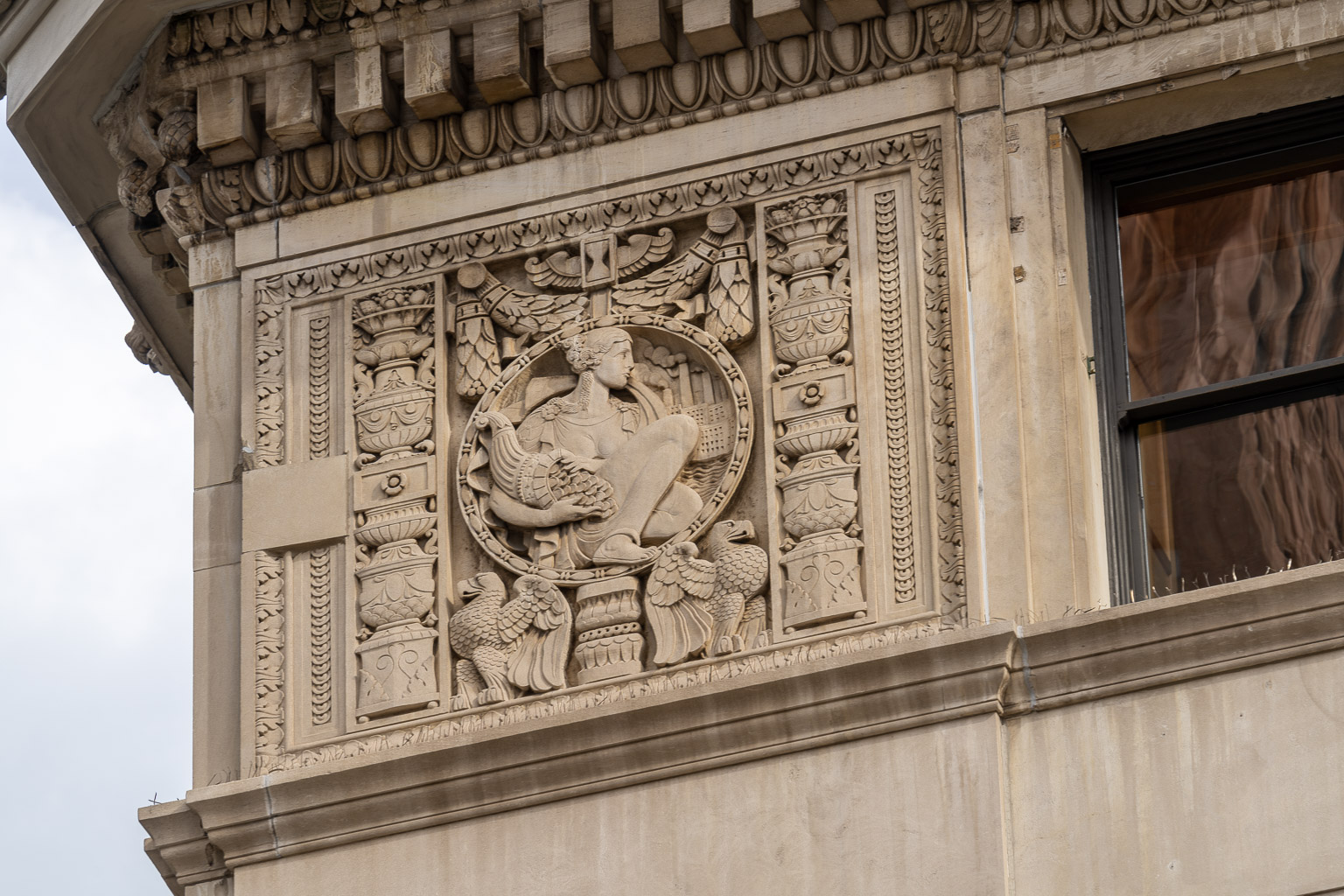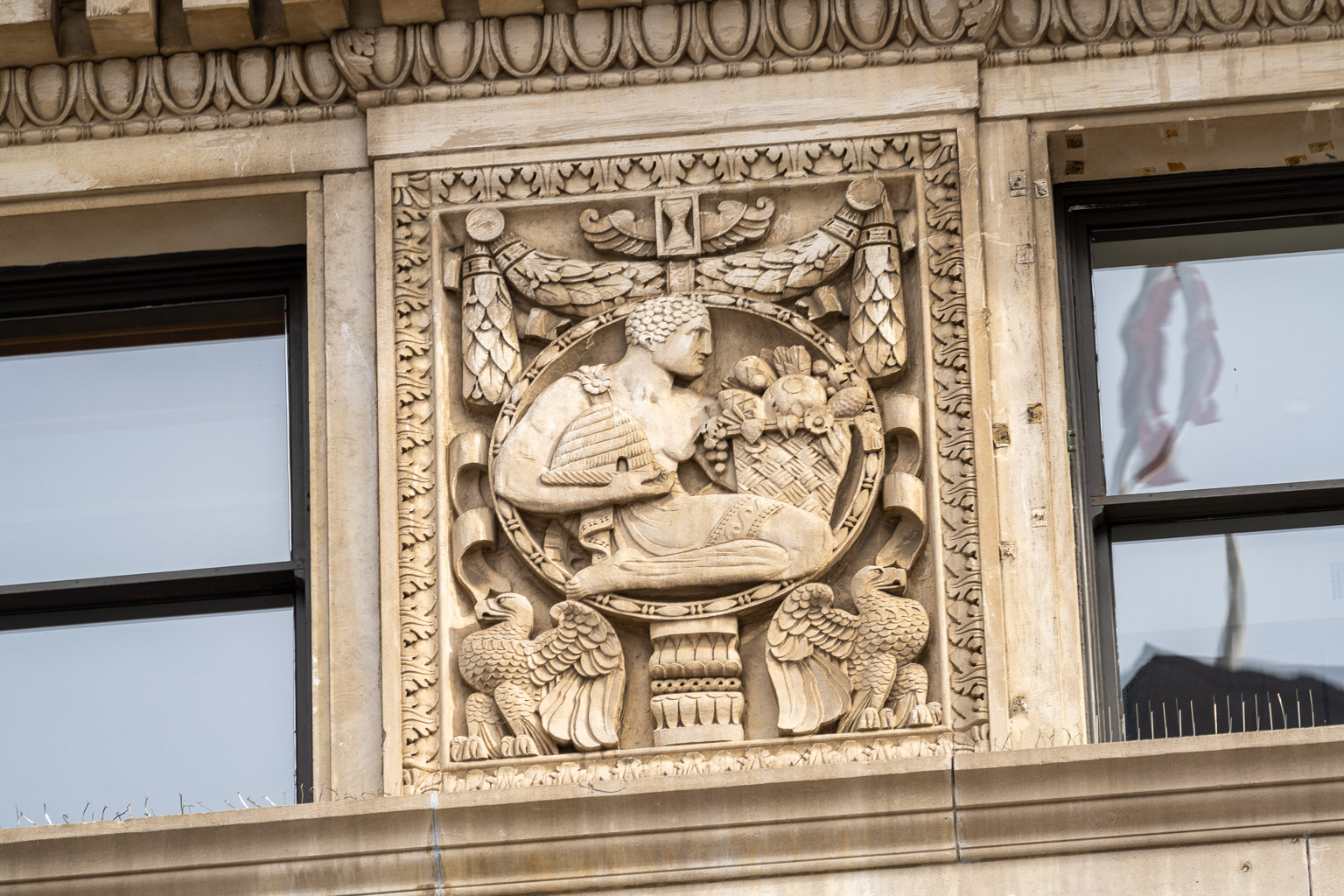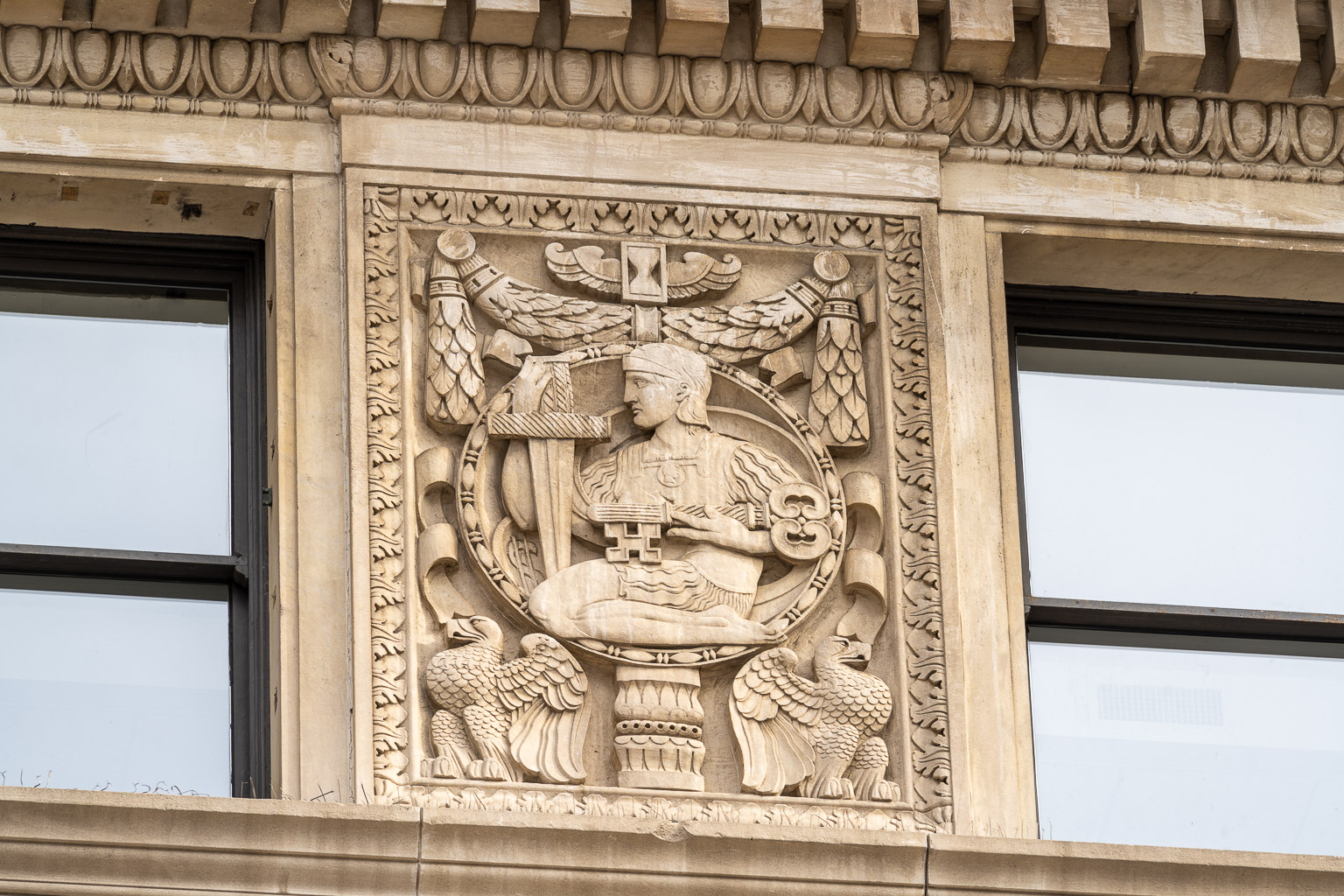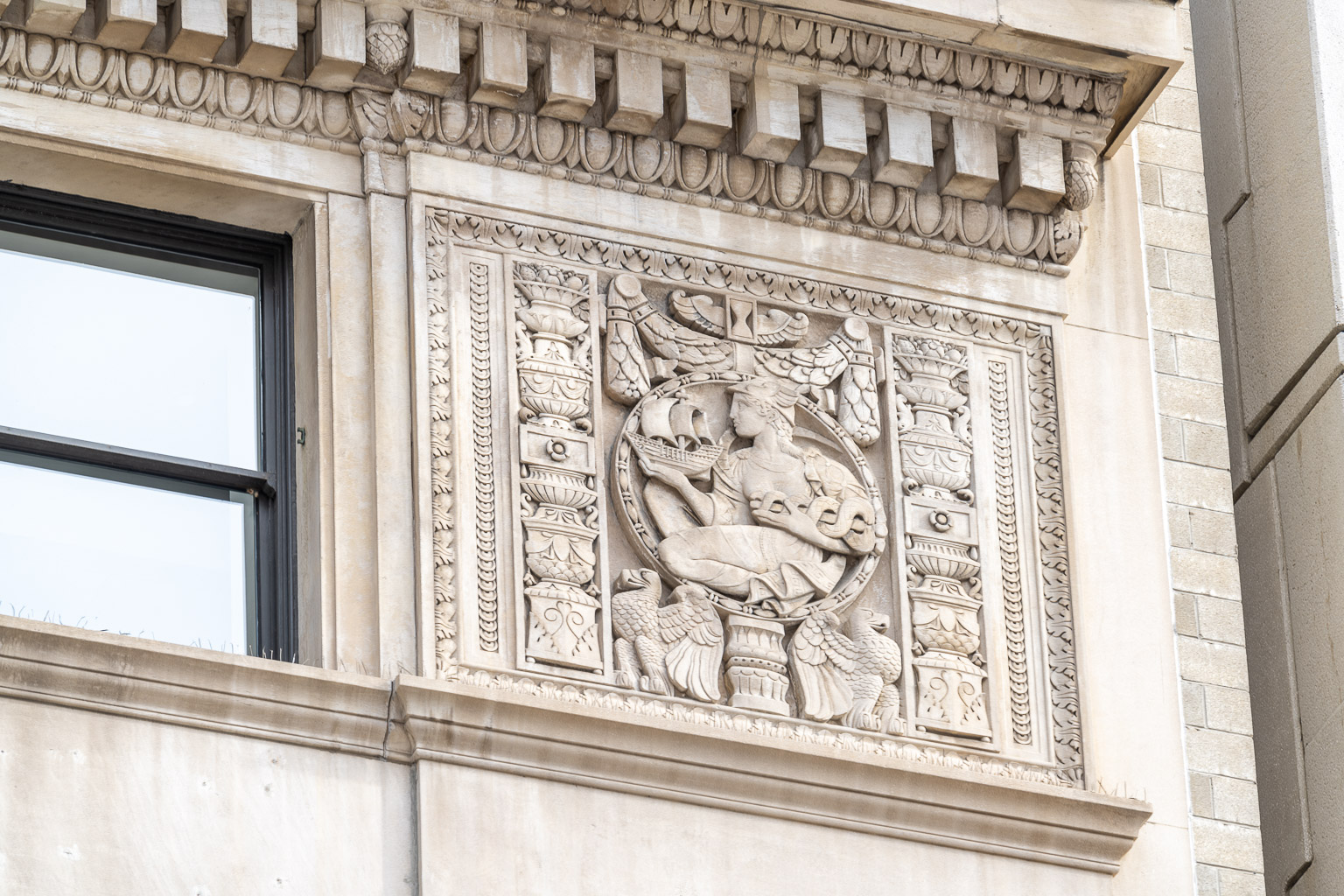The Financial District Local Historic District is an oddly-shaped Historic District which encompasses the rectangle bounded by Washington Boulevard, West Lafayette Street, and Woodward Avenue from Campus Martius to Jefferson, but excluding Kennedy Square, and adding a rectangle bounded by Woodward, East Congress, Bates Street and Cadillac Square. You can read details about the district and its buildings in the The Proposed Historic Detroit Financial District Final Report (local copy), which I recommend highly to anyone interested in Detroit's history. A Wikipedia Page also describes the district.
Contents:
- 140-150 West Congress, New Penobscot Building
- 155 West Congress, Murphy Building
- 205 West Congress, Bankers Trust Company Building
- 220 West Congress
- 243 West Congress, Marquette Building
- 131 West Fort, Penobscot Building
- 151 West Fort, State Savings Bank
- 160 West Fort, Federal Reserve Bank of Chicago Detroit Branch
- 201 West Fort, Detroit Trust Company Building
- 211 West Fort, Detroit Bank & Trust Tower
- 1 Griswold, Standard Savings Building
- 500 Griswold, Union Trust (Guardian) Building
- 535 Griswold, Buhl Building
- 615 Griswold, Ford Building
- 645 Griswold, Greater Penobscot Building
- 719 Griswold, Dime Savings Bank Building
- 735 Griswold, Security Trust Company
- 751 Griswold, First State Bank
- 231 West Lafayette, Federal Building, now Theodore Levin U.S. District Court
- 321 West Lafayette, Detroit Free Press Building
- 234 West Larned
- 250 West Larned, Detroit Fire Department Headquarters
- 555 Shelby, Merrill Lynch Building
- 542 Shelby, Telegraph Building
- 607 Shelby, U.S. Mortgage Bond Building
- 625 Shelby, Detroit Fire and Marine Insurance Company
- 1 Woodward Avenue, Michigan Consolidated Gas Company Building (now called One Woodward Avenue)
- 501 Woodward, Detroit Federal Savings and Loan Association
- 600 Woodward, Vinton Building
- 608 Woodward, Martin Limbach Hardware
- 611 Woodward, National Bank of Detroit (NBD) Building, now Chase Tower, or The Qube
- 612 Woodward, Traub Jewelry
- 616 Woodward
- 620 Woodward, Mabley & Company
- 630 Woodward, Mabley & Company
- 660 Woodward, First National Bank Building
More photos and more description of this building can be found at HistoricDetroit.org.
More photos and more description of this building can be found at HistoricDetroit.org.
The Bankers Trust Company Building, at 205 W Congress Street (at the corner of Shelby Street), Detroit, Michigan was designed by Wirt Rowland in 1924 while he worked for Smith, Hinchman, and Grylls. Rowland enjoyed using Romanesque-inspired features on building exteriors, but knew they didn't work for tall buildings since only the bottom couple floors were close enough to see such details from the street. However, the three-story Bankers Trust Company Building provided the perfect opportunity for him to use such decorations.
The building is located on a corner and has a corner entrance, which is rarely found on a building in downtown Detroit, especially a bank. The 1st photo below is from diagonally across the intersection, the 2nd photo below shows the Congress Street face, and the 3rd photo below shows the Shelby Street face. Most of the ground floor is two-stories in height, with a normal-sized third-floor above. The building's surface is made not from stone, but from terra cotta, a ceramic made from soft clay which is easily worked into complex patterns, then is fired at high temperatures to become a durable hard material, able to sustain Detroit summers and winters, and looking like intricately carved stone. The terra cotta patterns were designed by Rowland, made into moulds by Detroit's own architectural sculptor, Corrado Parducci, the same guy responsible for the two large Guardian Sentinels outside the Griswold Entrance of the Guardian Building. Northwestern Terra Cotta in Chicago produced tiles from the building from those moulds.
The corner door of the building is shown in closer detail in the 1st photo below. The letters above the corner door used to spell out Bankers Trust Company until a few years ago, but now are reduced to only Trust since this building is now used for Trust Cocktails, Shareables & Nightlife. The 2nd photo below shows the holes that once provided mounting for the words Bankers and Company, along with much of the fine detail of the third floor above. The arch around the doorway, featured in the 3rd photo below, is the same size as the window arches on the two street sides of the building, but its interior is set back quite a bit more than the windows. A green marble column stands on each side of the door, topped by extensive ornamentation. The 4th photo below is a closer-still look at the front door's inner mouldings, and the bronze clamshell that once housed a revolving door behind it. Just outside the clamshell the mouldings are vine leaves, and further out are scallops. Above it are chevron zigzags. The 5th and 6th photos below show details above the doorway.
The details around the door are incredibly rich. The 1st photo below shows vines, horses, and other patterns beside the door. The 2nd photo below shows a close-up of a set of 3 vines. The 3rd photo below shows details of a corner beside the door, transitioning into the arch above it.
The top of the green columns on either side of the door have lots of fun details. The 1st and 2nd photos below show, from bottom to top, a green column, ferocious eagles, running dogs, and protective lions, all animals presumably protecting the money you deposit in the bank. The 3rd photo shows another view of the same, but also a smaller lion on either side of each arched window, and a chandelier in the restaurant occupying the space today (in 2023).
The window frames of the building are all green as well, matching the pillars beside the door. The green marble inserts in the left-most Shelby Street window (3rd photo at top) and right-most two Congress Street windows (2nd photo at top) hide the floor of a mezzanine level above the private bank offices which were single-story areas below those inserts.
The arches, decorations, and windows used on the building are all deeply recessed in order to show dark shadows on days that are sunny, cloudy, or overcast. Remember that the building is surrounded by much taller buildings, so is usually in shade, but Rowland wanted the decorative patterns of the building to stand out regardless. The 1st photo below shows details around the third floor windows: stylized eagles with stars, representing the United States are above the windows, and a Native American revolving sky symbols of four spinning leaves within a sunburst (sometimes described as a whirling wind swastika) are between the windows. The pillars are embedded with designs, their capitols are sometimes standard Corinthian, sometimes containing a theater mask within them, sometimes morphing into stylized eagles. Square caps above the capitols have various designs on them, and above those caps are bearded faces. At the building corners, the 2nd and 3rd photos below show the 'Corinthian' capitols transformed into a Medusa face, squirrels holding nuts, and lions, with a stylized sun-face above the cap, and snake-bears (?) above the sun-face.
More photos and more description of this building can be found at HistoricDetroit.org.
More photos and more description of this building can be found at HistoricDetroit.org.
More photos and more description of this building can be found at HistoricDetroit.org.
More photos and more description of this building can be found at HistoricDetroit.org.
More photos and more description of this building can be found at HistoricDetroit.org.
I have written a comprehensive web page about The Guardian Building and hope you read and enjoy it.
More photos and more description of this building can be found at HistoricDetroit.org.
More photos and more description of this building can be found at HistoricDetroit.org.
More photos and more description of this building can be found at HistoricDetroit.org.
More photos and more description of this building can be found at HistoricDetroit.org.
More photos and more description of this building can be found at HistoricDetroit.org.
More photos and more description of this building can be found at HistoricDetroit.org.
The photos below show details on the First State Bank Building.
More photos and more description of this building can be found at HistoricDetroit.org.
More photos and more description of this building can be found at HistoricDetroit.org.
More photos and more description of this building can be found at HistoricDetroit.org.
More photos and more description of this building can be found at HistoricDetroit.org.
More photos and more description of this building can be found at HistoricDetroit.org.
More photos and more description of this building can be found at HistoricDetroit.org.
More photos and more description of this building can be found at HistoricDetroit.org.
More photos and more description of this building can be found at HistoricDetroit.org.
More photos and more description of this building can be found at HistoricDetroit.org.
More photos and more description of this building can be found at HistoricDetroit.org.
